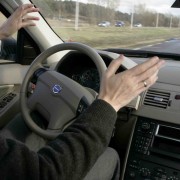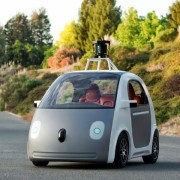News Roundup: India Says ‘No’ to Self-Driving Cars, Two Companies Plan Cross-Border Road Test for Driverless Cars, and More
Jennifer van der Kleut
A roundup of recent headlines to come out of the driverless and connected-car industries this past week:
India says No to driverless cars over fear of job losses
India’s transport minister, Nitin Gadkari, told news outlets this past week that driverless cars will not be allowed in India anytime soon, due to the number of job losses it could lead to. Gadkari said India’s unemployment rate is still too high to risk losing jobs to automated vehicles. As it is currently, he said the country is in need of at least 100,000 more commercial drivers and he looks forward to being able to provide the Indian people with so many available jobs. In addition, India officials estimate that the amount of infrastructure changes that would be needed to prepare India for self-driving cars would be far too expensive given the nation’s current economy. Gadkari did say he would not rule out the technology altogether in the future if India’s situation improves. Read more from BBC News.
Manhattan proposal wants to transform cross-island highways into roads exclusively for driverless vehicles
Manhattan-based architecture firm Edg has proposed a bold project that they say would reduce urban pollution and congestion in Manhattan and make some major roadways on the island exclusive to driverless cars. The proposal, called “Loop NYC,” wants to take major roadways that cut across the island-namely, 14th, 23rd, 34th, 42nd, 57th, 86th and 110th streets-and turn them into roads that are exclusive to driverless cars. Edg says this could cut down traffic time from the current 40 minutes it takes to drive a loop from Grand Central Station to Lower Manhattan and back down to just 11 minutes, with traffic flowing more smoothly thanks to self-driving vehicles. In addition, Loop NYC wants to create enormous green spaces and pedestrian bridges that would cross over the driverless roadways and would be exclusive to pedestrians and bicyclists, improving beauty while reducing pollution, as well as increasing the city’s walkability. As expected, the proposal is still “largely speculative” in nature, particularly given the fact that the federal government still has not approved a nationwide set of laws and regulations for driverless cars. Read more about Loop NYC on ArchDaily.
Two companies plan road test for driverless cars across the border from the U.S. into Canada
Two major companies working on driverless vehicle technology, Continental and Magna, are teaming up for a whopper of a road test. The two companies plan to send self-driving cars across the border from Michigan into Sarnia, in Toronto, Canada. The cars will reportedly cross the border at two locations-through the tunnel from Detroit into Windsor, and crossing the Blue Water Bridge into Sarnia. Reps say the cars’ “driverless mode” will be enabled whenever possible but will likely include a few instances when the driver will take over control. They add, crossing an international border makes for incredibly unique driving conditions, which will allow Continental and Magna to collect a lot of valuable data from the cars’ cameras, LiDAR and radar. In addition, the test will reveal future hurdles when it comes to crossing the borders of two different countries with two different sets of laws and regulations. Read more from TechCrunch.
Image: Loop NYC rendering by Edg


